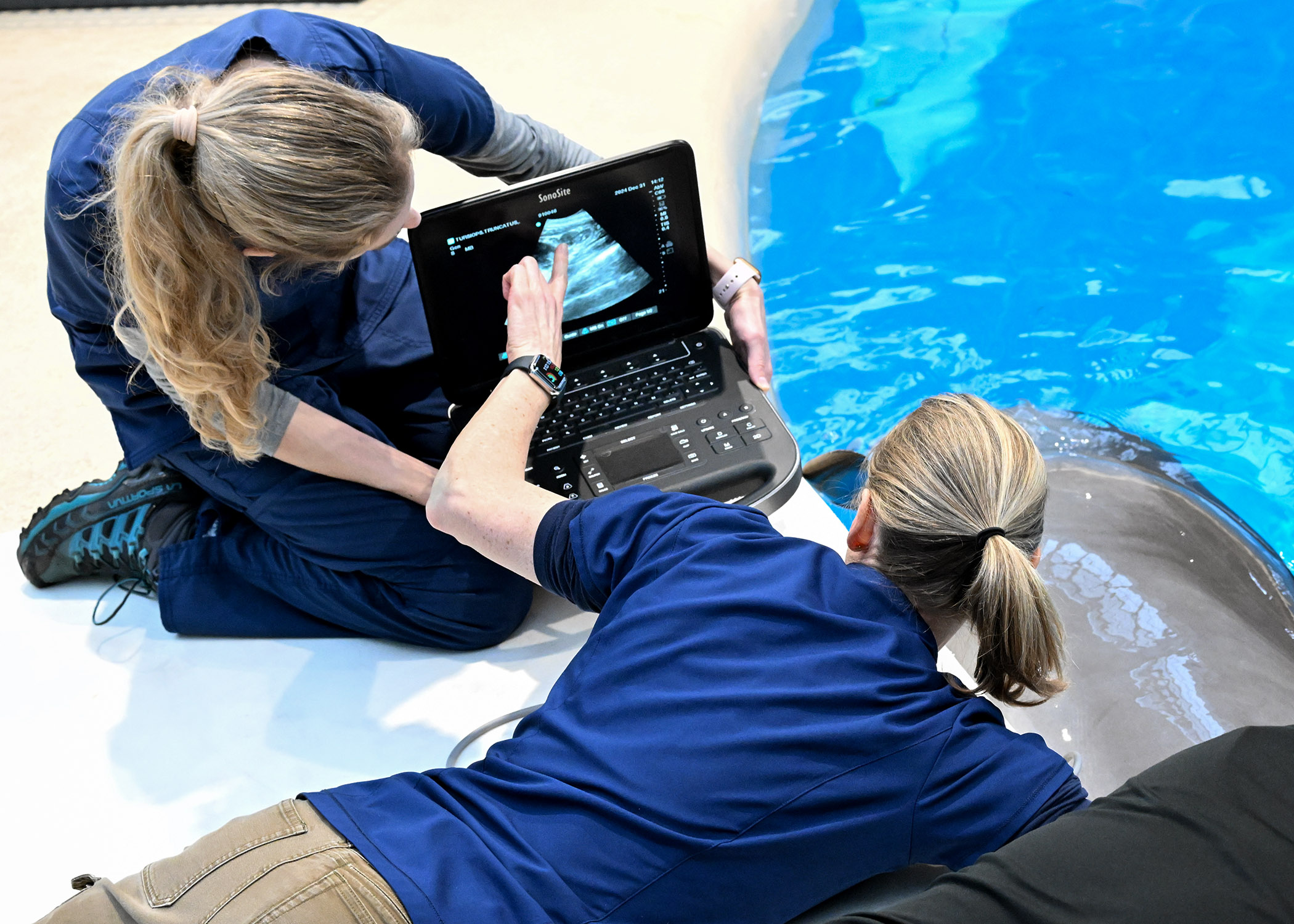Brookfield Zoo dolphin gets prenatal ultrasound
A dolphin at Brookfield Zoo Chicago is undergoing a medical exam that most expectant women can relate to—she’s getting a prenatal ultrasound.
Allie, a 37-year-old bottlenose dolphin, is reportedly in her second trimester of pregnancy and is giving researchers and conservationists a unique opportunity to study the gestational period in dolphins. Much like human mothers, Allie is undergoing routine ultrasound imaging and bloodwork to monitor changes in her body throughout the pregnancy.
Unlike humans, dolphins have pregnancies that include 4-month trimesters and can last for up to 12 months. According to imaging, Allie is now in her second trimester and is expected to give birth over the summer, potentially as early as May.
 “This pregnancy is more than a joyous event for the Zoo—every dolphin pregnancy is an opportunity for us to advance our scientific knowledge and understanding of the biology and life sciences of marine mammals. It underscores our zoo’s commitment to marine mammal conservation and enhances our field-based scientific research programs that benefit wild dolphin populations in the Gulf of Mexico and around the globe,” Mike Adkesson, Brookfield Zoo Chicago president and CEO, said in a release. “It also marks an important opportunity to inspire curiosity and conservation mindedness among our guests and future generations as they witness the Zoo’s first dolphin pregnancy in a decade.”
“This pregnancy is more than a joyous event for the Zoo—every dolphin pregnancy is an opportunity for us to advance our scientific knowledge and understanding of the biology and life sciences of marine mammals. It underscores our zoo’s commitment to marine mammal conservation and enhances our field-based scientific research programs that benefit wild dolphin populations in the Gulf of Mexico and around the globe,” Mike Adkesson, Brookfield Zoo Chicago president and CEO, said in a release. “It also marks an important opportunity to inspire curiosity and conservation mindedness among our guests and future generations as they witness the Zoo’s first dolphin pregnancy in a decade.”
Monitoring Allie’s pregnancy will provide invaluable insight into the prenatal and neonatal dolphin care. It is her caretakers’ hope that by monitoring her and her calf during and up to one year after birth that they will gain information that could enhance the welfare of the species, as up to 20% of calves do not survive their first year, according to the zoo.

